
artery/vein cross section practical Diagram Quizlet
Arteries are tubular collections of cells which transport oxygenated blood and nutrients from the heart to the tissues of the body. Medical.. Cross section of artery and vein. Image: "Types of Arteries and Arterioles" by Phil Schatz. License: CC BY 4.0, edited by Lecturio.
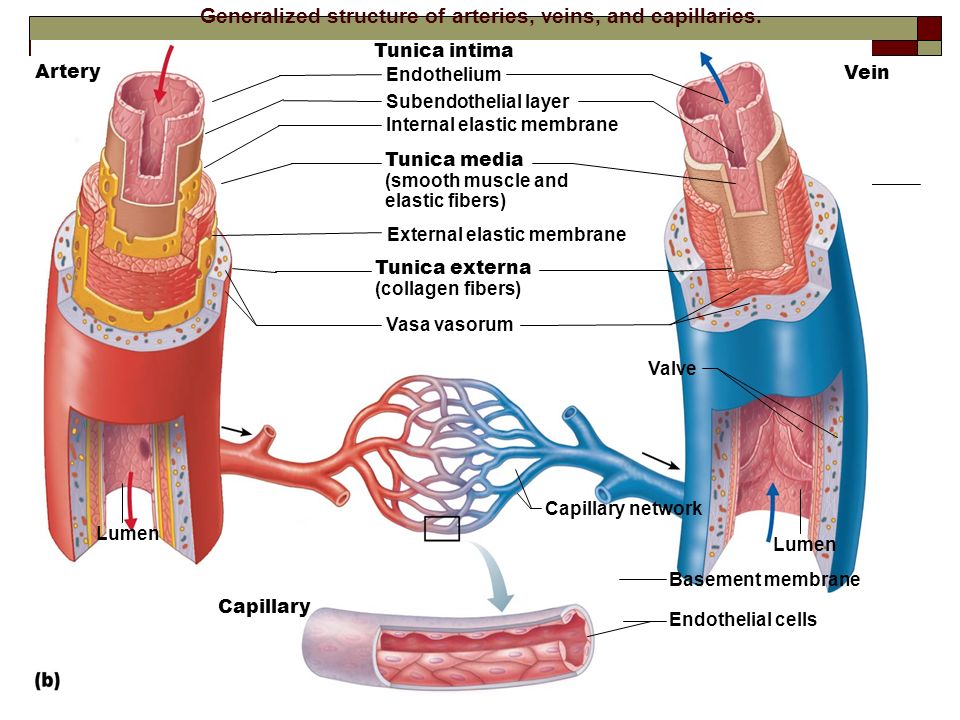
Blood Vessels Alisa Houghton
Arteries have smaller lumens than veins, a characteristic that helps to maintain the pressure of blood moving through the system. Together, their thicker walls and smaller diameters give arterial lumens a more rounded appearance in cross section than the lumens of veins. Figure \(\PageIndex{2}\): Structure of Blood Vessels.
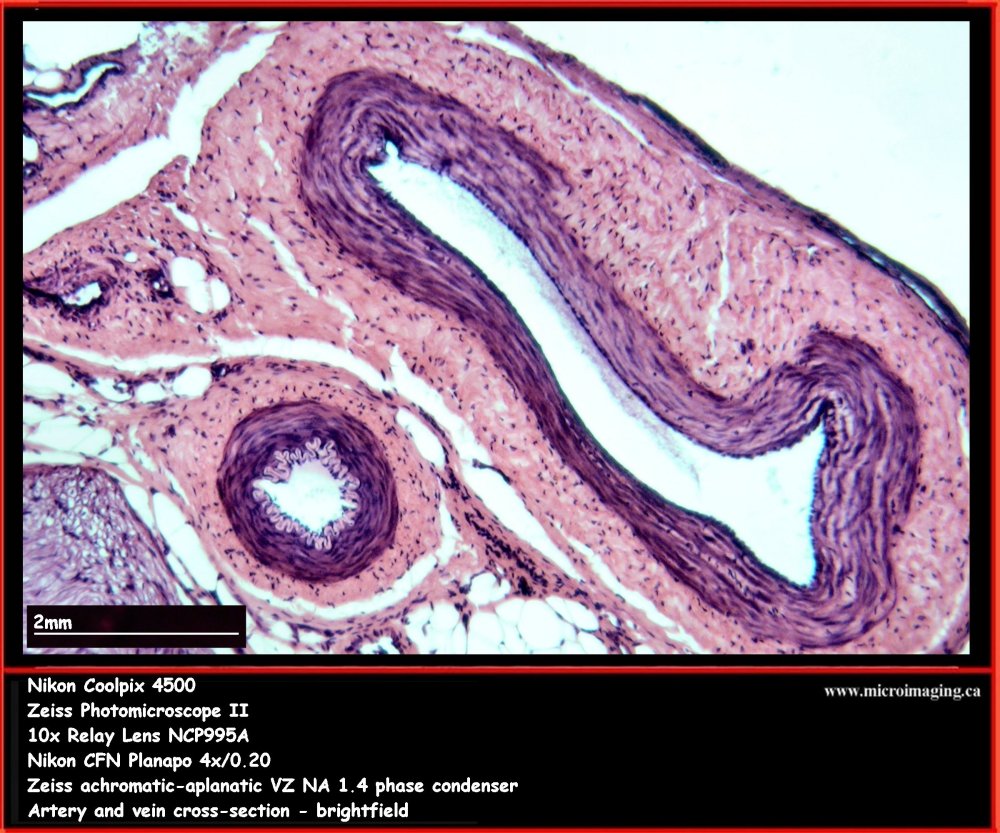
Artery & Vein, cross section
Currently, coronary artery cross-sectional areas are easily measured with MDCT and potential narrowing degrees can be defined in a more objective manner. Therefore, we formulated the correlation between cross-sectional areas of coronary arteries instead of diameters. In our study, we observed that the formula worked well for both women and men.
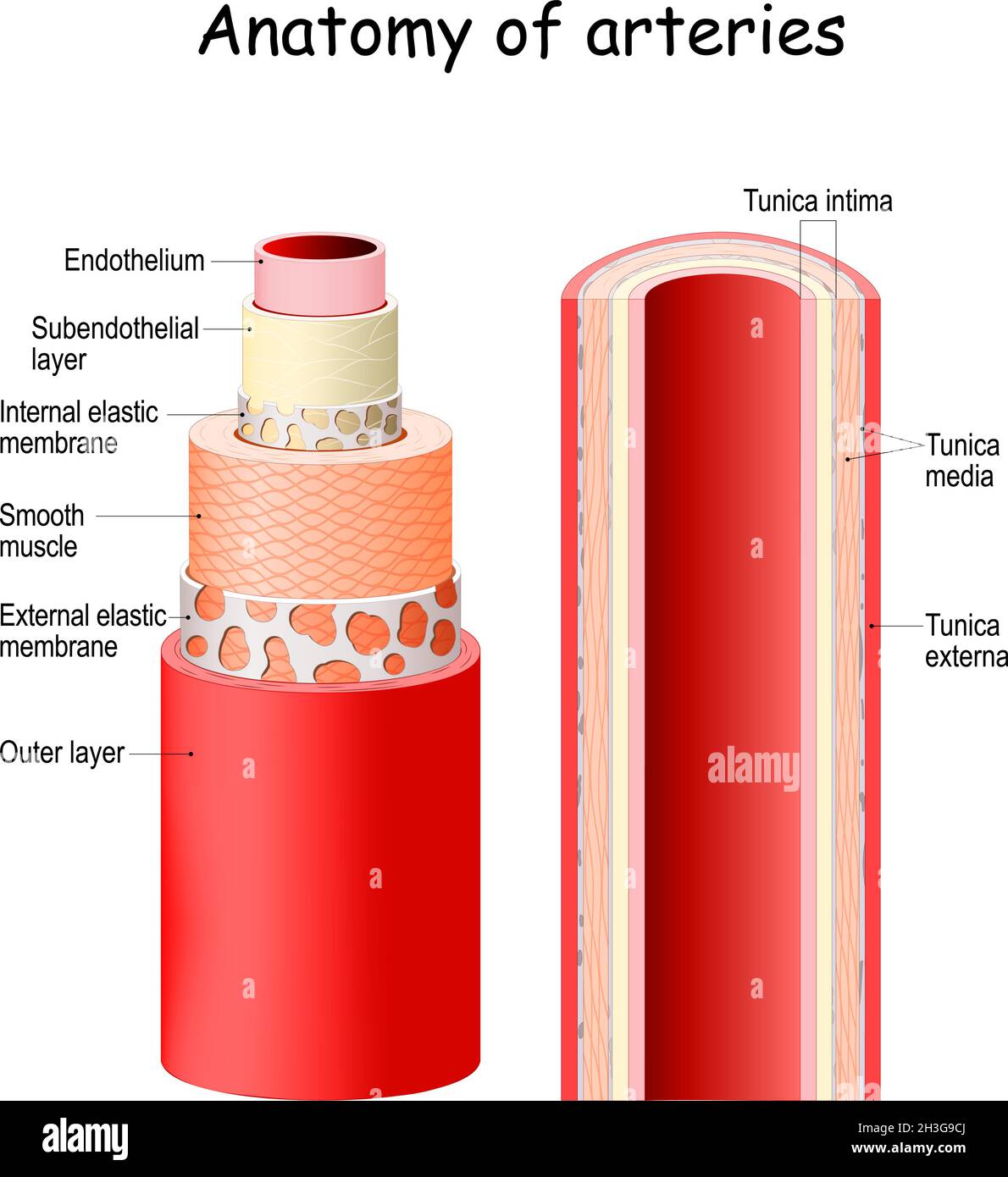
Coronary artery cross section Stock Vector Images Alamy
Together, their thicker walls and smaller diameters give arterial lumens a more rounded appearance in cross section than the lumens of veins. Figure 20.1.2 - Structure of Blood Vessels: (a) Arteries and (b) veins share the same general features, but the walls of arteries are much thicker because of the higher pressure of the blood that flows.

Crosssectional view of an artery showing adventitia (outermost layer),... Download Scientific
96 Artery - Cross Section; Elastic Type Elastic Artery VIew Virtual EM Slide Elastic Artery. Note the alternating layers of connective tissue and smooth muscle cells in the media. If there are no fibroblasts in the media, which cell is involved in the synthesis and maintenance of the collagen and elastic fibers as well as vascular proteoglycans.

Blood Vessel Structure and Function Boundless Anatomy and Physiology
Cross-section through valve Controlling blood flow In order to control blood flow through the vessels, the smooth muscle surrounding the arteries can constrict which causes vasoconstriction.
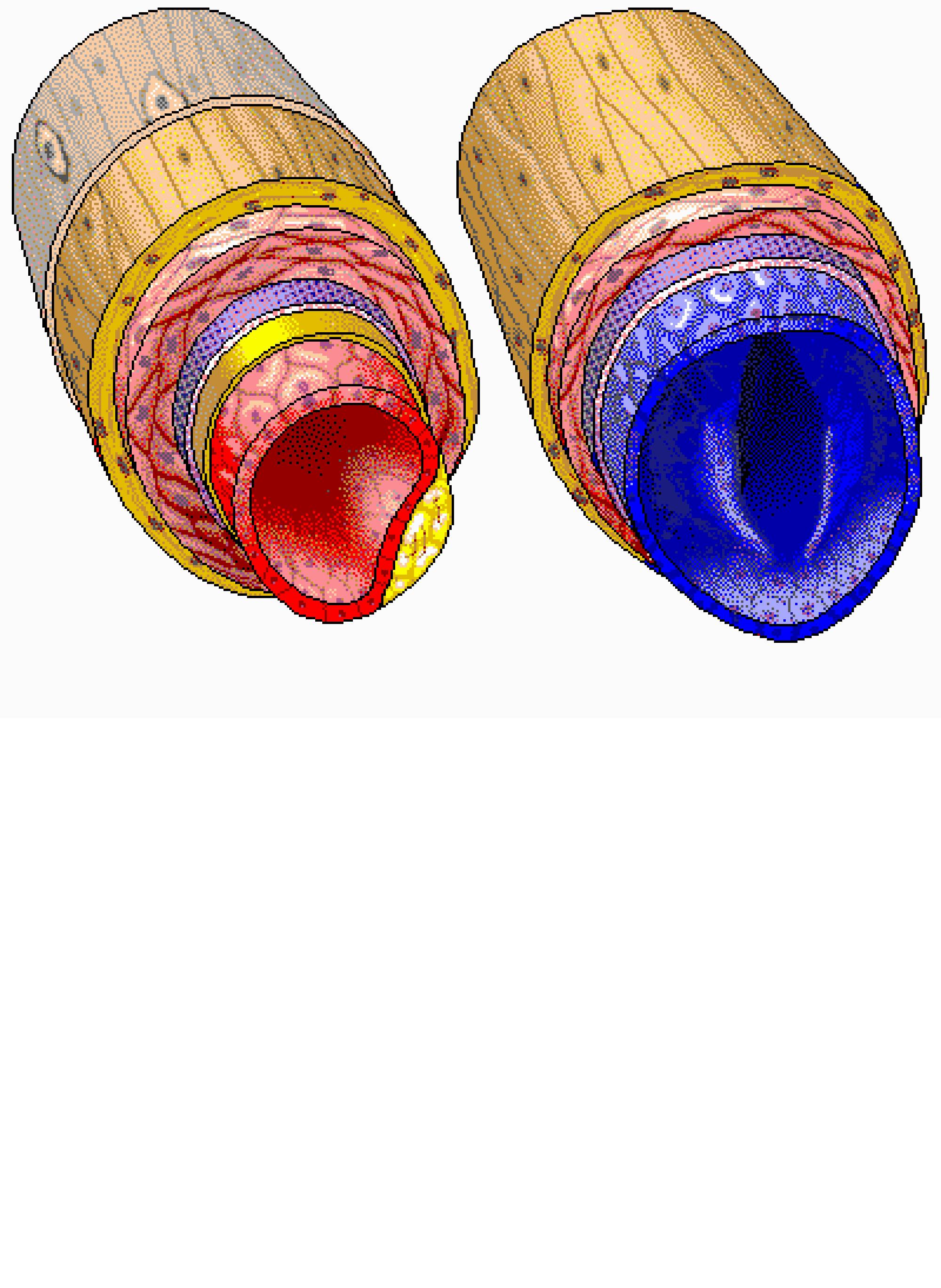
Arteries vs Veins Structure, Function & Blood Flow
Anatomy of the heart : axial slice with chambers, myocardium, pericardium, left and right coronary arteries and other structures labeled. Anatomy of the human heart and coronaries: how to view anatomical structures This tool provides access to an MDCT atlas in the 4 usual planes, allowing the user to interactively discover the heart anatomy.

Artery crosssection Stock Image C007/9850 Science Photo Library
Arteries and arterioles have thicker walls than veins and venules because they are closer to the heart and receive blood that is surging at a far greater pressure ( Figure 20.3 ). Each type of vessel has a lumen —a hollow passageway through which blood flows.

The Circulatory System CK12 Foundation
Cross section Cross-section The chambers of the heart operate as a 'double-pump' system for the body's circulation. In coordination with valves, the chambers work to keep blood flowing in the.

Coronary Artery CrossSection Stock Image C004/8354 Science Photo Library
Ventricular contraction ejects blood into the major arteries, resulting in flow from regions of higher pressure to regions of lower pressure, as blood encounters smaller arteries and arterioles, then capillaries, then the venules and veins of the venous system.. Figure 20.13 compares vessel diameter, total cross-sectional area, average blood.

LM of a cross section of a human coronary artery Stock Image P206/0028 Science Photo Library
Figure 40.10.1 40.10. 1: Blood vessel layers: Arteries and veins consist of three layers: an outer tunica externa, a middle tunica media, and an inner tunica intima. Capillaries consist of a single layer of epithelial cells, the endothelium tunic (tunica intima). Veins and arteries both have two further tunics that surround the endothelium: the.
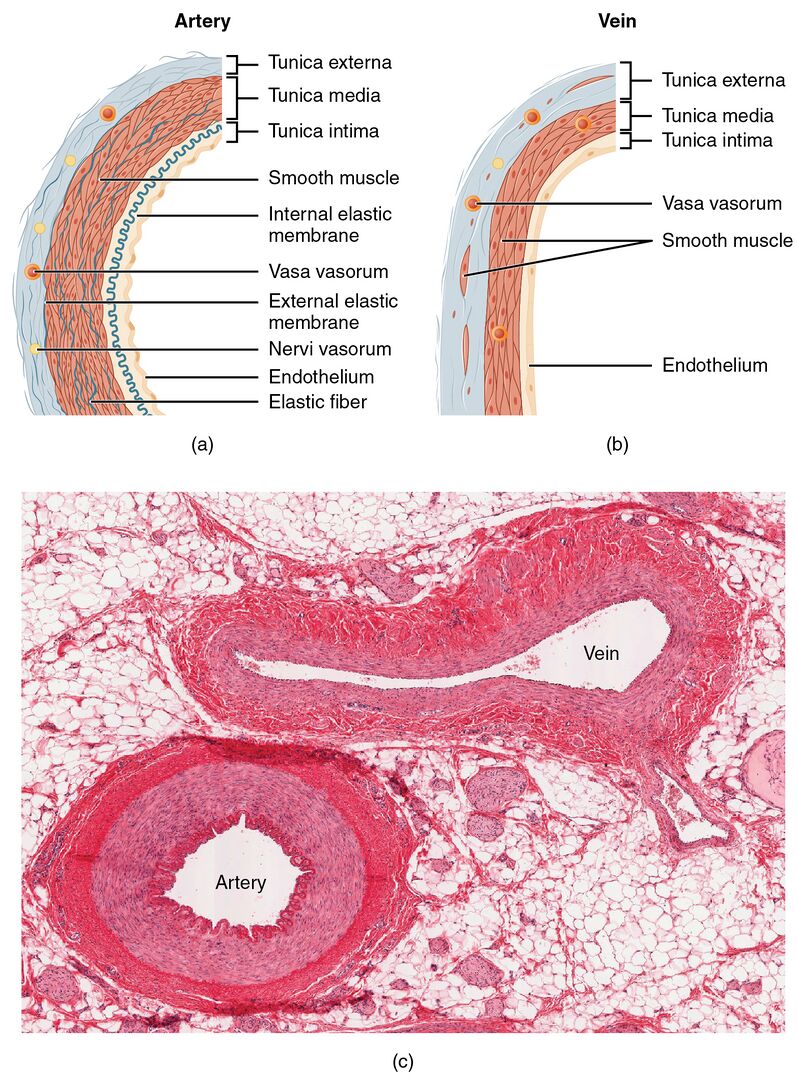
Arteries Physiopedia
Structure and Function of Blood Vessels Learning Objectives By the end of this section, you will be able to: Compare and contrast the three tunics that make up the walls of most blood vessels Distinguish between elastic arteries, muscular arteries, and arterioles on the basis of structure, location, and function
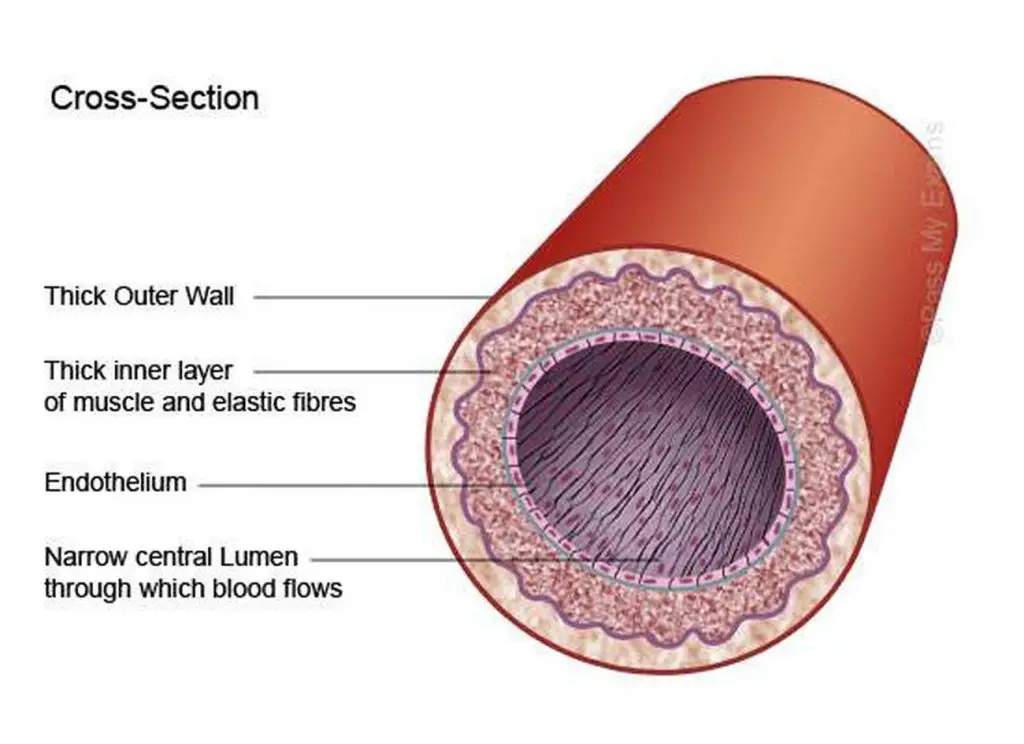
Pictures Of Artery
Subclavian artery (cross section) Therefore, you need clear and strong waves to guide you, meaning that you need properly created cross sections. An excellent starting point is Kenhub's cross-sectional atlas. With its crisp sections and labelled structures, you can build a mental 3D image in record time.

Artery and Vein Cross Section Diagram Quizlet
Blood vessel histology Author: Lorenzo Crumbie MBBS, BSc • Reviewer: Dimitrios Mytilinaios MD, PhD Last reviewed: October 30, 2023 Reading time: 17 minutes It would be impossible to get blood to the predestined locations without the vascular pathways. Blood vessels form the extensive networks by which blood leaves the heart to supply tissue. . Additionally, other blood vessels return from.

Cross Section Of An Artery
Ventricular contraction ejects blood into the major arteries, resulting in flow from regions of higher pressure to regions of lower pressure, as blood encounters smaller arteries and arterioles, then capillaries, then the venules and veins of the venous system.. Figure 4 compares vessel diameter, total cross-sectional area, average blood.

Crosssectional views of the coronary artery. (A) Normal coronary... Download Scientific Diagram
Take a look at this cross-section through an elastic artery, and identify the three main layers - tunica intima, tunica media and tunica adventitia. Elastic arteries: These arteries that receive blood directly from the heart - the aorta and the pulmonary artery.: These need to be elastic because: They are relatively thin compared to their diameter.